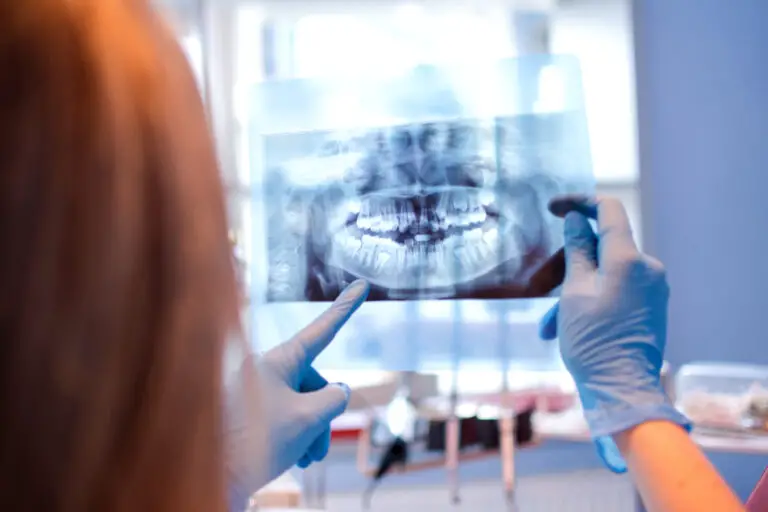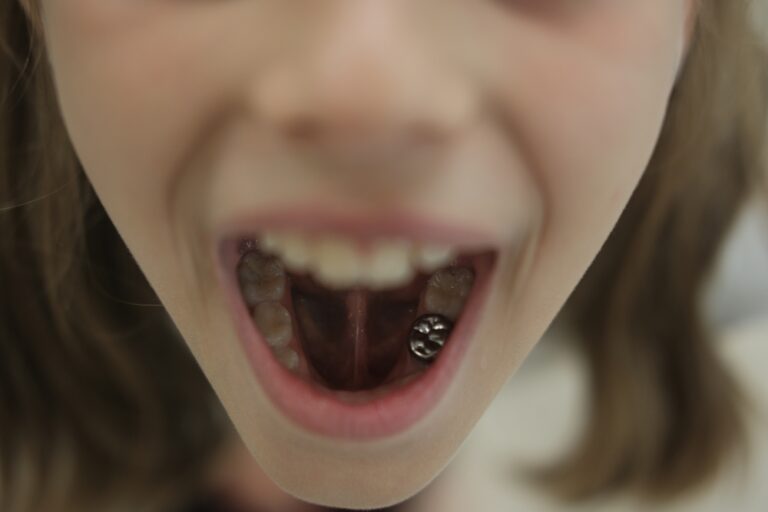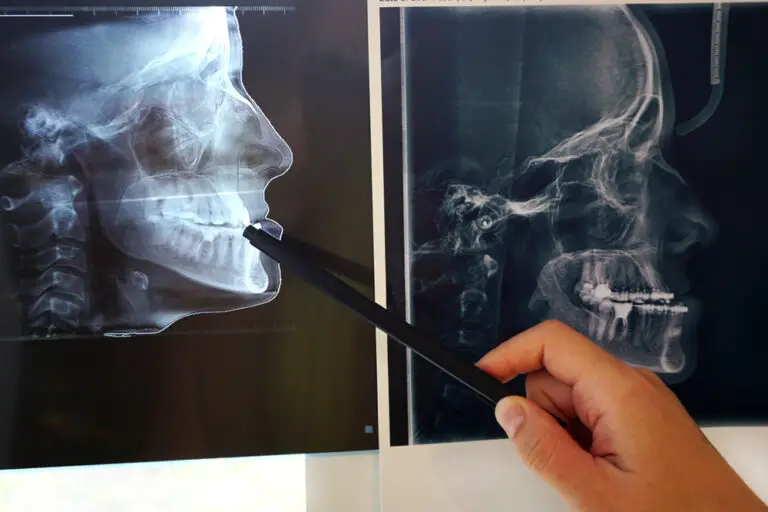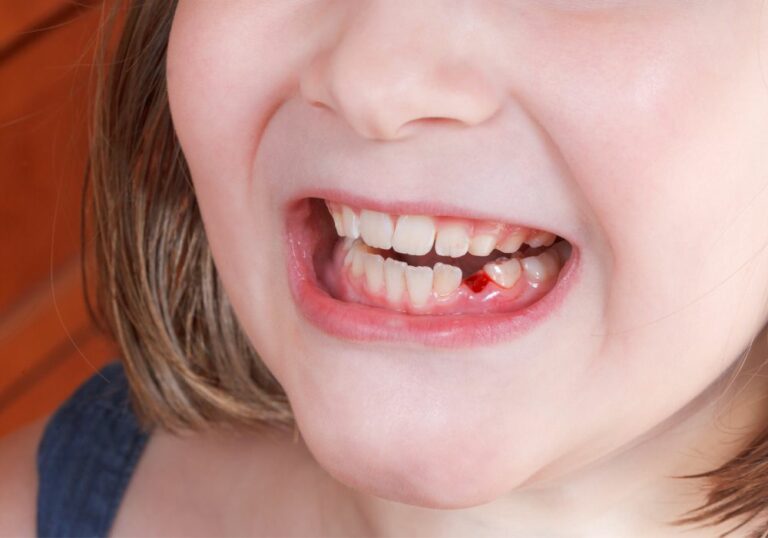Bonding is a common and effective way to repair a broken or chipped front tooth. In dental bonding, a tooth-colored composite resin material is applied directly to the tooth and shaped to restore the natural shape and appearance. The material bonds to the underlying tooth structure, creating a seamless repair that can look perfectly natural.
Bonding provides an excellent aesthetic solution for minor front tooth fractures, chips or cracks. It can repair damage to a corner, edge or surface of the tooth. For some fractures, it may be possible to bond just the broken fragment back into place. Bonding a single front tooth typically takes 30-60 minutes to complete and lasts 5-10 years with proper care.
Benefits of bonding for a broken front tooth
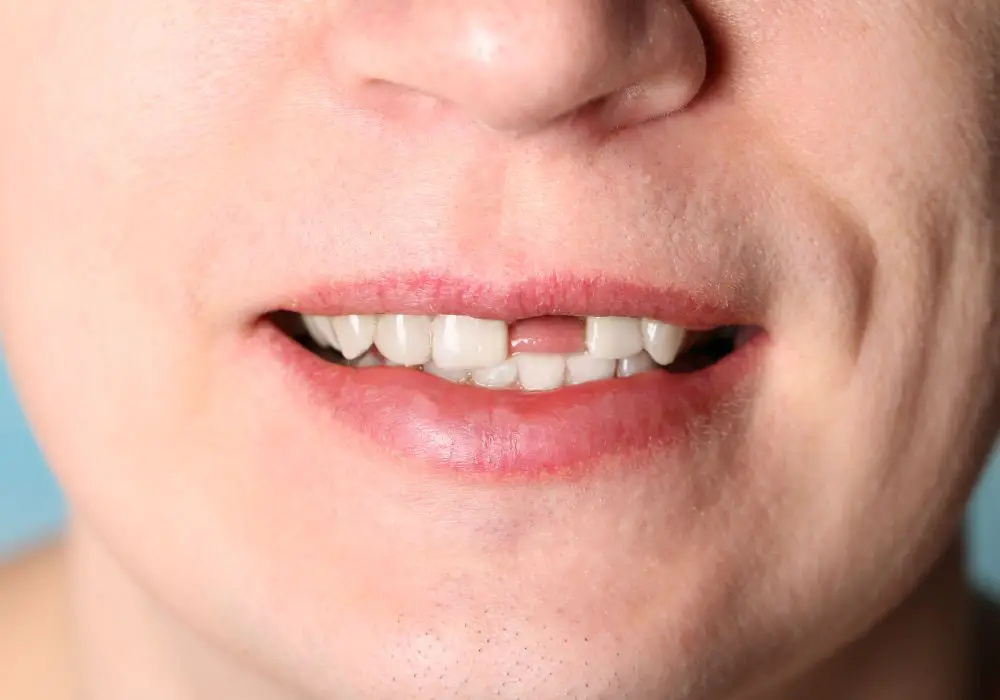
- Restores natural appearance – The composite resin material can be closely matched to your actual tooth color, providing an invisible repair.
- Preserves healthy tooth – Bonding only requires minimal removal of healthy tooth structure. This is less invasive than alternatives like dental crowns.
- Fast, simple procedure – No dental lab work is required. Bonding can often be completed in a single appointment.
- Cost-effective – Bonding a single front tooth costs significantly less than a crown. Dental insurance often covers a good portion of the cost.
- Long lasting – With good oral hygiene and avoidance of biting/chewing hard objects, bonded restorations can last 5-10 years or longer before needing repair or replacement.
Limitations of dental bonding
- Material stains more easily than dental crowns – Composite resin can become stained or discolored over time, requiring periodic replacement. Smoking increases chances of staining.
- Bond may chip or break off – The material is not as strong and durable as a dental crown. Biting or chewing hard foods/objects may fracture the bond.
- Requires conservative tooth structure – Enough natural tooth needs to remain to allow bonding material to adhere properly. Severely decayed teeth may not be candidates.
- Not ideal for back teeth – The forces from chewing and biting limit bonding for posterior restorations. Crowns are usually better for damaged back teeth.
Determining if your tooth can be bonded
Several factors will determine if your specific tooth fracture is a candidate for repair with bonding:
Location and extent of damage
- Minor fractures of front teeth – Small chips, cracks, or broken corners limited to the enamel layer can often be beautifully restored with bonding.
- Vertical root fractures – Cracks extending down into the root are not repairable through bonding. A root canal or dental crown may be required.
- Large fractures – If more than roughly half of the tooth structure is missing, a crown will provide better strength and durability.
Remaining tooth structure
- Bonding requires a sufficient amount of healthy, intact enamel and dentin for the material to adhere to. Teeth that are severely decayed or fractured below the gumline may not have enough structure remaining.
Occlusion and tooth alignment
- Bonding should restore proper contact and alignment with neighboring and opposing teeth. Issues with bite or alignment may require orthodontics or reshaping prior to bonding.
Bruxism and clenching
- People with forceful grinding or clenching habits may fracture bonded teeth more readily. Using a nightguard is recommended to protect bonded teeth.
- High biting forces may indicate a stronger restoration like a crown is needed.
An examination and possible dental x-rays will allow your dentist to determine if your particular fracture can be restored conservatively with bonding.
The tooth bonding procedure step-by-step
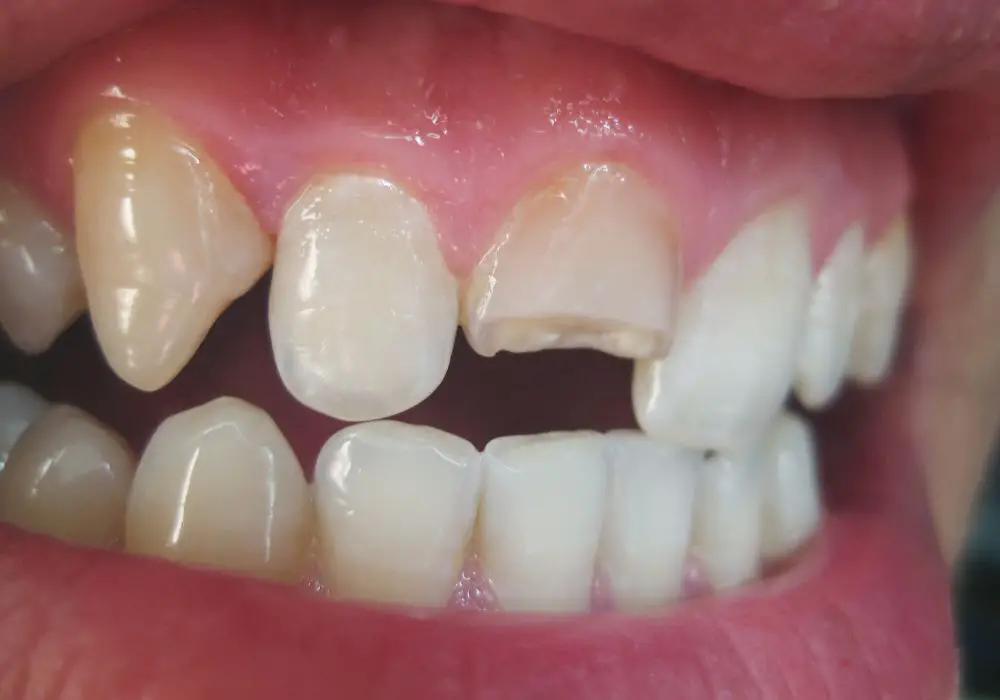
Bonding a broken front tooth is a relatively straightforward procedure completed in a single office visit. The steps typically include:
- Numbing – The tooth and surrounding gum tissue are numbed with local anesthetic. This prevents any pain or discomfort during treatment.
- Tooth preparation – The dentist uses a small diamond bur to carefully remove any decay and roughen the surface for bonding. Only minimal tooth structure is removed to preserve as much healthy tooth as possible.
- Applying etching gel – A gel that contains phosphoric acid is placed on the prepared surface for 10-30 seconds. This etches and cleans the tooth, allowing the bonding material to adhere. The tooth is then rinsed thoroughly.
- Applying bonding agent – A thin coat of bonding agent is painted onto the etched enamel. This helps the restoration bond and prevents staining. It is air dried and hardened with a curing light.
- Placing composite resin – The tooth-colored composite is shaped and contoured to precisely match the natural tooth. It is packed firmly against the prepared tooth in layers and sculpted into place.
- Hardening with curing light – A special curing light is used to harden each layer of composite resin as it is applied. This secures the material in place layer by layer.
- Finishing and polishing – The dentist carefully shapes and refines the restoration using burs and polishing tools/paste. This smooths and blends the bond seamlessly with surrounding tooth structure.
- Checking bite and function – The newly bonded tooth is checked for proper contact and occlusion with other teeth. Your bite is also assessed.
Once completed, the bonded tooth should look, feel and function like your natural tooth. While immediate use is possible, avoiding extremes of temperature or pressure for a couple days helps prolong the bond. Regular dental cleanings and checkups will help detect any issues early so repair can be done. With proper oral care, bonds in minimally stressed areas can last 5-10 years or longer.
Aftercare and longevity of bonded teeth
Proper care and maintenance of your bonded tooth will maximize its longevity and aesthetic appearance. Recommendations include:
Oral hygiene
- Thorough brushing and flossing to prevent decay and staining around bonded teeth and beneath the margins.
- Routine professional cleanings every 6 months to keep bonds clean and monitor for problems.
Avoid hard foods/objects initially
Bonded teeth are susceptible to fracture from high biting forces. Avoid chewing extremely hard or crunchy foods for at least a couple weeks after placement.
Wear a nightguard if grinding
Clenching or grinding teeth can crack bonded restorations. Wear a nightguard while sleeping to protect your investment.
Watch for cracks or looseness
Inspect the bonding regularly and contact your dentist if you notice cracking, chipping, or loss of the material. Early intervention means simpler repair.
Have bonding repolished
Over time, minor roughness or staining of bonded teeth can develop. Have your dentist periodically repolish the bonding to refresh the smoothness and shine.
Expect periodic replacement
On average, bonded front teeth last 5-10 years before needing repair or replacement. This may be shorter with improper care, oral habits, or newer bonding materials.
With the right indications and proper home care, dental bonding can beautifully restore the natural appearance and function of a slightly fractured front tooth for many years. Regular dental visits will help maximize the longevity of your dental bonding.
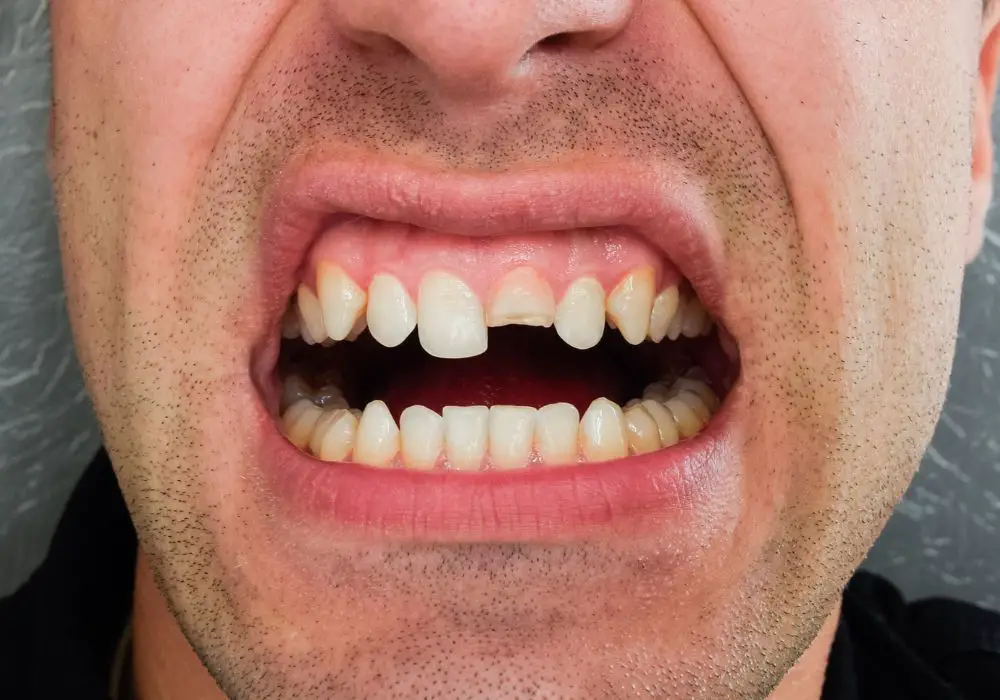
Table comparing bonding vs other front tooth repair options
| Restoration Type | Bonding | Veneers | Crowns |
|---|---|---|---|
| Description | Tooth-colored composite resin applied directly to tooth | Thin porcelain covers bonded to front of teeth | Full coverage restorations made of porcelain/metal |
| Durability | 5-10 years | 10-20 years | 15-30 years |
| Preparation | Minimal removal of natural tooth | Light reduction of outer enamel layer | Significant shaping of natural tooth |
| Procedure time | Single 30-60 min. appt | 2 appts several weeks apart | 2 appts several weeks apart |
| Cost per tooth | $$ | $$$ | $$$$ |
| Ideal applications | Minor chips, cracks, fractures | Minor alignment/shape issues | Significant decay, fractures, defects |
Frequently asked questions about bonding broken teeth
Can I bond just the broken fragment back onto the tooth?
In some cases where the fragment remains intact and undamaged, it is possible to bond it directly back into place on the tooth. This restores full strength and maximizes natural tooth structure preservation. The bonded fragment must fit precisely and match the color.
How long does bonding last on front teeth?
With proper care and oral habits, composite resin bonds on front teeth typically last 5-10 years before needing repair or replacement. Bonds on back teeth may only last 1-3 years due to stronger biting forces.
Does bonding ruin the tooth?
Bonding is a very conservative approach that requires little removal of healthy tooth structure. This minimal invasion preserves the maximum natural tooth and is unlikely to complicate future treatment. It is far less damaging than more aggressive options like crowns or veneers.
Can you bond teeth without drilling them?
In some cases where the enamel is intact and suitable for bonding, no drilling is required. Often at least some minor roughening of the surface is needed for bonding agents to infiltrate and adhere properly. Non-drill options like laser etching can sometimes substitute for drilling.
Is tooth bonding painful?
The bonding process itself should not be painful thanks to effective local anesthesia. Some mild sensitivity to hot and cold may occur following bonding, but this is usually temporary. Taking care to avoid putting heavy pressure on the bond initially can minimize discomfort.
Conclusion
For fractures, chips or cracks limited to the enamel portion of front teeth, dental bonding offers an excellent cosmetic and conservative restoration option. The composite resin material seamlessly blends with surrounding natural tooth structure to provide an invisible repair that can look perfect.
Bonding enables curing damaged front teeth without aggressive removal of healthy tooth structure and at a fraction of the cost of crowns or veneers. With proper home care and avoidance of damaging oral habits, dental bonding can restore the beauty and function of slightly fractured front teeth for 5-10 years or longer. Regular dental checkups will help detect any issues early so minor repairs can be made.

